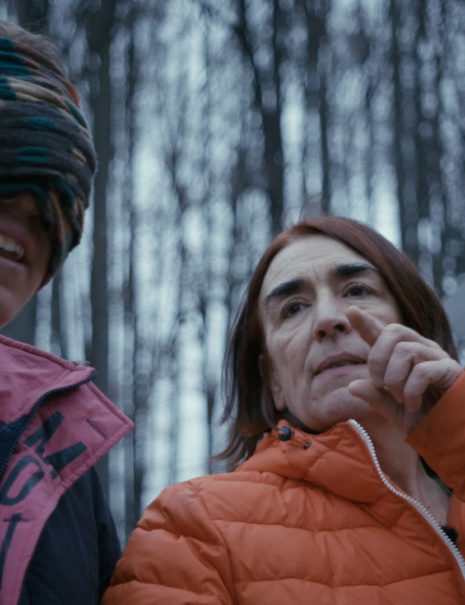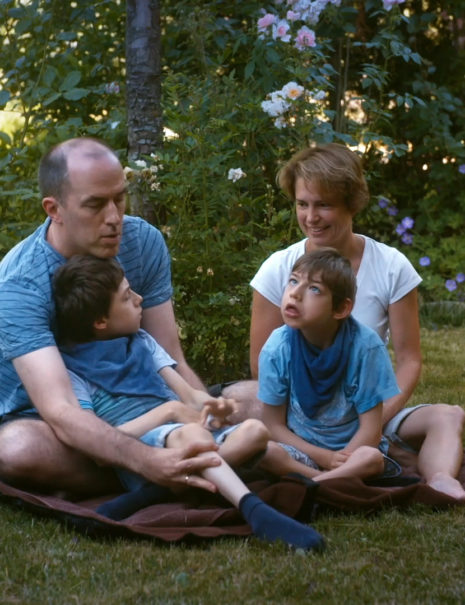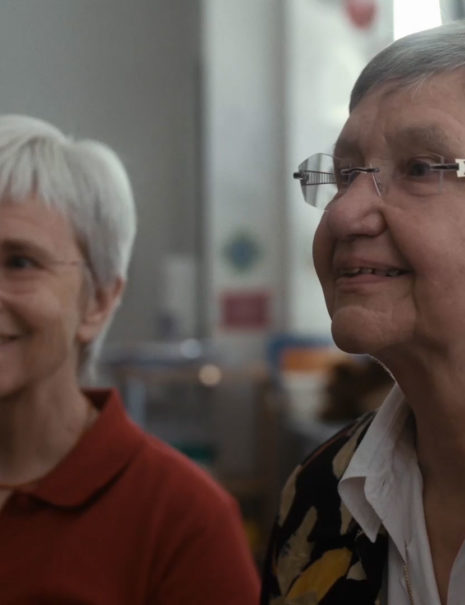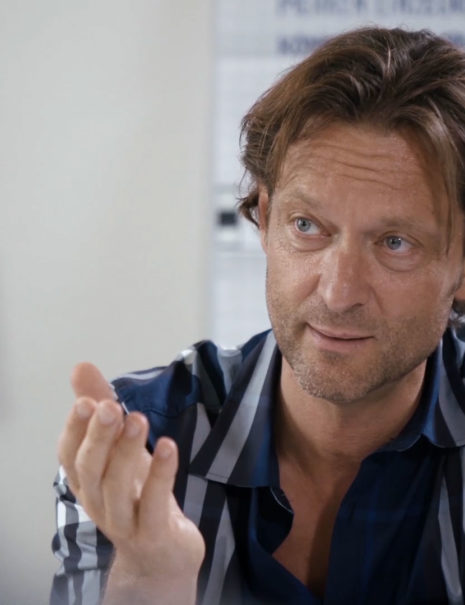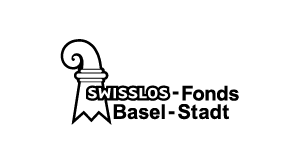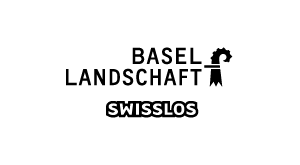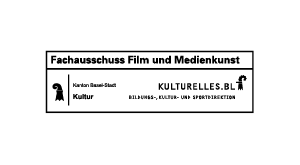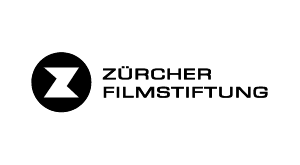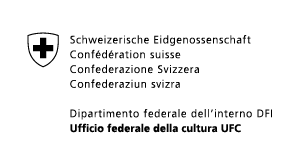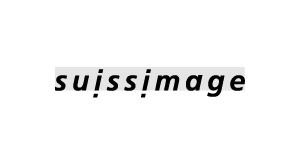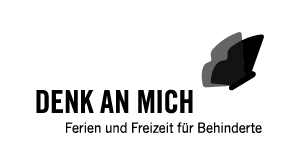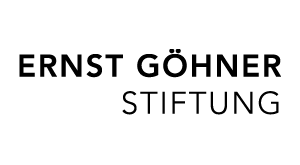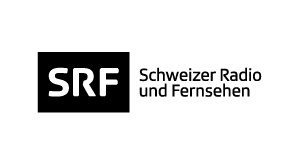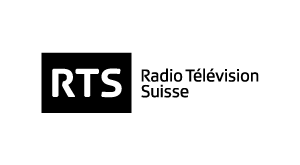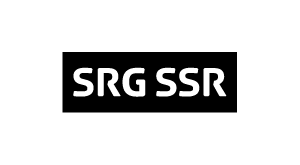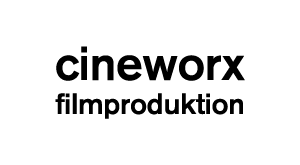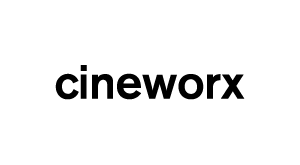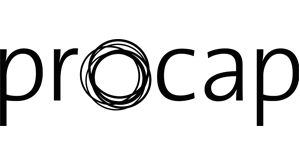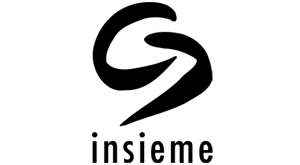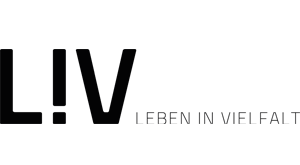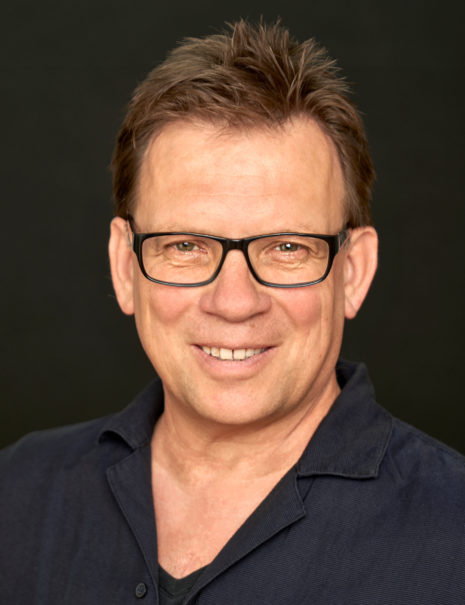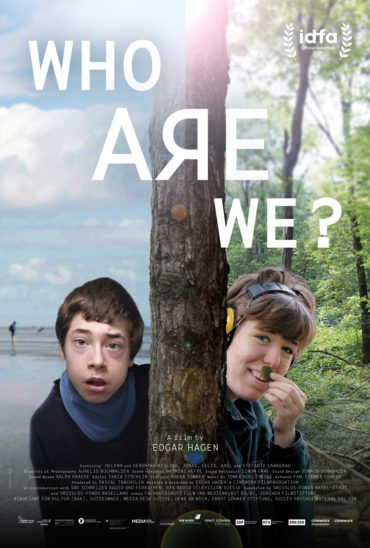
How do we deal with it, if everything turns out differently than we imagined? Helena (19) and Jonas (11) are people with high support needs and put their parents, families, schools and society to the test. The film breaks down the wall that separates them from our world, shows how language and community develop from the ground up – and poses the question of who we are.
| Written and directed | Edgar Hagen |
| Director of Photography | Aurelio Buchwalder |
| Sound Recordist | Simon Graf |
| Music | Tomek Kolczynski |
| Editor | Tania Stöcklin |
| Colorist | Roger Sommer |
| Sound Design | Oswald Schwander |
| Re-recording Mixer | Ralph Krause |
| Narrator | Stefan Kurt |
| Producer | Pascal Trächslin |
| Production | Cineworx Filmproduktion GmbH |
| in Coproduction with | SRF Schweizer Radio und Fernsehen |
With the support:
Media Partner:

In my films, I tell how life reinvents itself on the basis of fragile conditions and requirements. Life craves development and change. Norms are breached – life forms and mental states change. Interaction with marginalised groups is central to my cinematic explorations. After all, social visions only exist when all are included. The living situations of those with disabilities, psychosis and schizophrenia were an existential topic in our family from early childhood. From this personal background, I pose the question in some of my films as to how people from entrenched mental and social niches can break out and change their living situations for the better.
In “Wer sind wir?” (Who are we?), I observe this transformation process in a new, comprehensive form. At the start of every personal and social development is the necessity of change. In this film, that is a moment of complete overload: when parents are confronted with a mentally disabled child despite careful pre-clarification and with no anticipation. Their perceptions and expectations are turned on their heads. After the initial shock of the parents following the birth of their handicapped children, the film deals with Helena and Jonas and their parents on the path to permanent change: perceptions for the future and of happiness are queried and new qualities of life are discovered in social networks.
In the film, the road that the parents travel with their children becomes a journey of development, on which we all find ourselves. After all, society has made it its task with the ratification of the 2006 UN Convention on the Rights of Persons with Disabilities to grant the general human rights to all persons – disabled persons have the same right to development.
The Convention on the Rights of Persons with Disabilities has been signed so far by 177 countries. It came into force in 2009 in Germany, in 2011 in the EU and in 2014 in Switzerland. I became aware through the work on this film of how exciting and wide-reaching this obligation is. Its consistent implementation radically challenges social norms and demands an upheaval in the thinking and actions of the majority, with impact on the whole of society. In my film, I wanted to show the path to inclusion that derives from this as a fascinating and demanding path to knowledge. It is a path of explanation with questions of social and personal responsibility.
Along the roads taken by Helena and Jonas, I could see how new social networks come about and how crucial a solid cohesion is for this development process – not only for Helena and Jonas but also for everyone in their environment. It is impressive to see which impulses come from the handicapped children, how circumstances invert. In this way, non-handicapped children and the teachers at Jonas’ school learn a lot about opportunities, honesty and new forms of understanding. We see in an intimate insight into the school day how positive development processes are ignited in all participants in this inclusive society.
Helena and Jonas provide impetus in the film. They pose existential questions, break through norms and trigger developments. We are challenged to learn with them how communication can work under different conditions. Whereas disabled persons used to live in isolation and dependency, new forms of understanding on equal terms are emerging today in the environment of Helena and Jonas, like in an experimental laboratory. Society has the opportunity to learn a new language with these incentives.
Edgar Hagen
Interview with Edgar Hagen about his work, inclusion and the search for happiness
You have already made several films about forms of living that are outside the norms. What is it that you find fascinating about people who don’t conform to the norms?
A norm is a construct, an expression of the habits of the majority society or an instrument of power for the preservation of vested interests. It is superimposed on life. The norm tries to steer life into channels. But people do not conform to the norm. There are no “norm people”. But there are people who move within the boundaries of the norm. Others find themselves outside the norm. Norms exclude people because of more difficult or different requirements. I’m interested in what norms trigger and do to people. My films deal with the diverse conditions and suppositions that people face in the world. It’s about breaking through the norms and changing life forms and state of mind. I’m interested in developing an overall picture – and this includes people that are excluded by the norm.
Did your understanding of “being different” develop during the production of the film?
At the beginning of this film, I was, like everyone who had something to do with this film in one way or another, enveloped by an incomprehension – a lack of understanding or a feeling of being overwhelmed. I can identify with Helena’s mother and Jonas’ parents when they describe in the film how puzzling their own son and her own disabled daughter were to them at the start of the film. At the start of the film I was puzzled in interacting with Helena and Jonas, too. In the film, the road that the parents travel with their children becomes a journey of knowledge, on which we all find ourselves. Society is in a process of transformation, is opening up and must open up even further. We are still engaged with the implementation of the basic human rights that are called for and resolved in the UN Convention on the Rights of Persons with Disabilities. I wanted to present this road as a path of knowledge rather than a path of suffering. Beginning with that initial shock of the parents at the birth of a disabled child, the personal journey of change is the artwork that the film creates together with its protagonists in their discovery of new qualities and life goals. The film tells of this radical change in perception. It’s a transformation process that all protagonists surrounding Helena and Jonas go through. The discovery of these special qualities was also an experience for me, for the cameraman or the editor – otherwise the story could not have been told in this subtle way.
How did the idea for this film come about?
I’ve been working on the theme of transformation for as long as I’ve been making films. At the core of my first film were people that had no or limited speech. I have made films with homeless people, the disabled, people with psychosis and with schizophrenia. And I have always asked myself what the road from the periphery to the centre of society could look like. I know this plight from my own family history. Their living situation was a central topic at home from my earliest childhood. During the course of my cinematographic work, I became more and more aware how fundamental and highly political these confrontations are. I investigated in depth the extreme forms of the mind, the psyche, schizophrenia and possible ways out or of healing. I’m not interested in how the psychosis is treated but rather in how it is overcome. The representation of this act of strength, which is a field of learning for us all. I have worked together with psychiatrists, psychoanalysts, psychotherapists and brave people who were prepared to break through the boundaries of the norms that are a barrier for the inherent potential of many people. I have worked with specialists who have seen the potential in people and not the problem. The question “Who are we?” is asked often in my films: how can we learn to understand ourselves through the extreme forms of the mind? The films have triggered fundamental discussions. I accompanied the film “Someone Beside You” (2007) with many discussions for almost a year.
After one of these presentations, Veronika, the mother of Helena, came up to me. She felt personally spoken to by what I tell in this film. She liked the constructive approach that the film had adopted and told me already back then about her journey with her daughter Helena. She already wanted to win me over at that time – about ten years ago – for her story. But at that point I couldn’t imagine myself dealing with it. I didn’t want to make the next film with a similar theme. A couple of years later, the producer Pascal Trächslin approached me and said he had a story for me. He showed me material that Veronika had recorded herself with her daughter Helena over the years. The material was very moving and I couldn’t get it out of my head. With these recordings as a starting point, I asked myself what sort of story could they be turned into and how it would have to be told. From that, a process developed over several years with many encounters. I couldn’t envision making a portrait film exclusively about Helena and Veronika and instead sought a universal core to the story. After a few months, the original situation altered suddenly. Veronika and Helena had still been living together at that time in an apartment. Helena began to rebel and push violently against a change in her situation. At that point, Veronika felt physically threatened by Helena and it had come to assaults on the mother by the daughter. They could not live together any longer. The situation threatened change. At this moment, society came into play: it was no longer a matter of the relationship between the mother and her disabled daughter but rather the relationship between Helena and society. I felt directly addressed by this and found a new approach to this life story. At this point of transition, I made the first of my own recordings on the car journey with Veronika and Helena from their old home in Eastern Switzerland to a residential care home in Basel. It was an emotionally-charged situation and I developed the entire film from the question of what place society would grant Helena. The psychotherapist Barbara Senckel played a central role in this. She helped Veronika and me as well to come to a deeper understanding of Helena. Barbara Senckel also led me to Jonas and his teachers. From this point it became clear that it would be a film about Helena and Jonas and their path into society.
How did you then find the rest of the protagonists?
Based on the fundamental idea of making a film with Helena and Jonas, finding other protagonists developed organically. In the film are all those people who play a key role in preparing Helena’s and Jonas’ way into society. People and institutions with a relationship to Helena and Jonas were sought out. Veronika as well as Axel and Stefanie, the parents of Jonas, were the ones who opened the doors. They did everything they could to make the film possible. For Helena, the step into assisted living and meaningful activity was decisive. For Jonas, it was the step into a normal school class. Helena and Jonas provide impetus in the film. They throw up existential questions. We are challenged to learn with them how communication can work under different conditions. Whereas disabled persons used to live in isolation and dependency, new forms of understanding on equal terms are emerging today in the environment of Helena and Jonas, like in an experimental laboratory. Society has the opportunity to learn a new language with these incentives.
The camera work is really quite playful. How did this visual concept come about?
The camera work was very central to the implementation of this film. I was aware from the beginning that the film had to “breathe”. The ways that Helena and Jonas express themselves is different from what we’re used to. Both of them express themselves with their entire bodies. The aim was for the camera to take this into account. It was to establish a relationship, perceive the smallest nuances in which Helena and Jonas express themselves. The camera is the eye of the viewer. It became clear to me in the course of my cinematographic work that contact with a person doesn’t necessarily have to be from the front. I can stand behind or beside a person, I can show them close-up or all at once; it is all possible but not really decisive. Decisive is rather that I make a connection with the person I’m filming in the position from which I film. As long as I have that connection, I can also show them from behind or only a twitching leg or their hand. It was also important to me that this connection is always on equal terms. It was of central importance to establish direct contact between the viewer and the protagonists. To this end, the camera must be unbridled – and must get up close.
I knew that this would only be possible with a cameraman that I can trust completely in the situation, so I decided to work with the young cameraman Aurelio Buchwalder. For me, the deciding factor was his sensitivity and ability to engage with the situation and the people involved with self-confidence. We filmed with wide apertures and low depth of field – and tried to avoid static shots. The camera was not to be on a tripod for the filming situations with the protagonists. Aurelio took it quite literally that the filming should be hands-on. He really did do the camera work hand-held, without a Steadycam or Easyrig or other tools. This gives the images a physical directness. We took the risk of making big mistakes and were prepared to accept some defocusing here and there but it’s hardly visible any more in the film. It was clear that some material would end up on the cutting room floor. The only thing that wasn’t permitted to happen was that the camera was allowed to roll without a connection to the person. The goal was to break through voyeurism. The openness of the view enabled a sensitive imagery and an aesthetic that gives the people space, makes them interesting. We applied this method to discussion situations, too. We decided ultimately to film discussions with two cameras: one fixed camera that seeks out eye-to-eye contact with the protagonists and gives statement character to what they say, as well as a free hand-held camera.
I wanted to break up here and there the proximity that the film achieves and consciously move into a different, distanced observation of the scene. In fixed top-shot settings that we filmed with the drone, I ask myself where we are. These settings open up the space to basic questions, giving me and the observer the room to position ourselves.
What were your greatest artistic challenges in making the film?
I had to formulate in advance the transformation process that I wanted to portray with the film and its protagonists. Representing this transformation in a concept was a huge challenge for me. It felt like I was having to break a social stigma with the camera. At the same time, transformation also means here breaking through one’s own defence mechanism and discovering and appreciating persons who are marginalised. These processes continued for months. Another challenge was forming the internal connection between the two threads: the thread of Veronika and Helena and the thread of the Lankenau family. I saw how these stories intertwined but how this worked in detail was something I had to work out first in many convergences with the protagonists without the camera. This preparation was crucial for being able to start filming with a clear plan. The concept is like a map of these internal processes.
Primarily, we follow in the film the personal fates and the individual search for happiness. But to what extent is the film also political?
Helena and Jonas would not survive on their own. For them it is obvious what for us is only latent. The circle therefore has to be opened up. We can experience in this film how central social solidarity is for the development process, not only for Helena and Jonas but also for their environment. This is perfectly illustrated in Jonas’ school, how the children and teachers can learn from Jonas. The film does not represent the personal search for lost happiness. Rather, it shows how development and awareness processes that contain moments of happiness can be initiated in companionship with Helena and Jonas for all those involved. These are especially moving when it comes to Jonas’ classmates in the school.
The movement and opening up from the private to the collective space which the film consummates with Helena, Jonas and their parents is also a major social development. That the disabled are taken seriously as fully-fledged members of society is a relatively recent phenomenon and not implemented consistently. The UN Convention on the Rights of Persons with Disabilities was adopted in 2006. Since then, it has been signed by 177 countries. It came into force in 2009 in Germany, in 2011 in the EU and in 2014 in Switzerland. It grants disabled persons equal rights. Disability is no longer a private problem but rather a self-evident reality of society. This sounds captivatingly simple but is far-reaching. The consistent implementation of the Convention on the Rights of Persons with Disabilities triggers exciting learning processes that change and open up society. The film makes a contribution to a social process in showing that this opening up of society under extreme conditions can work and what value it can have for us all. In this sense, it may encourage and inspire people to go further than they ever have before.
Warning: preg_match(): Compilation failed: invalid range in character class at offset 12 in /home/httpd/vhosts/art-worx.ch/wersindwir.ch/wp-content/plugins/js_composer/include/classes/shortcodes/vc-basic-grid.php on line 184
The Swiss production company Cineworx Filmproduktion, headed by producer Pascal Trächslin, focuses on the development and implementation of long feature films and documentaries with potential theatrical exploitation opportunities on the national or international arthouse-market. The company was founded in December 2004 as an independent sister company of the film distribution Cineworx GmbH.
Production Company
Cineworx Filmproduktion GmbH
Bellerivestrasse 8
CH-8008 Zürich
www.cineworxfilmproduktion.ch
info@cineworxfilmproduktion.ch
+41 44 5004081
World Sales
Film Republic Hackney Picturehouse
270 Mare Street
London E8 1HE
United Kingdom
www.filmrepublic.biz
info@filmrepublic.biz
+44 203 287 9112
Distributor CH
Cineworx GmbH
Clarastrasse 48
4005 Basel
www.cineworx.ch
info@cineworx.ch
+41 612616370

